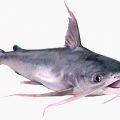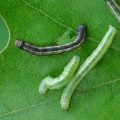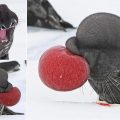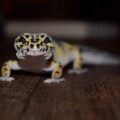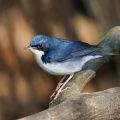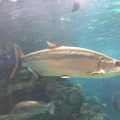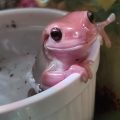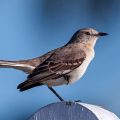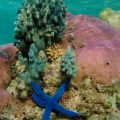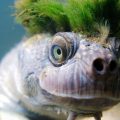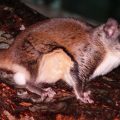Dugongs, also known as ‘sea cows’, are fascinating marine mammals that belong to the family Dugongidae. They are the only herbivorous marine mammals and feed solely on seagrasses, which grow on sandy sea floors in shallow, warm waters.
The population of dugongs is estimated to be around 30,000 animals across the lndo-Pacific region. However, populations 4 and 5 are currently at a critical level, with only 1,000 individuals in each population north of the equator and 500 individuals in the same population south of the equator. The population size of dugongs in population 3 is around 2,500 individuals.
Dugongs have a distinct appearance that sets them apart from other marine mammals. They have a broad, short, and trunk-like snout that they use to dig up seagrasses from the ocean floor. Their bodies are streamlined and have a fluked tail, which is made up of two separate lobes joined together in the middle. This helps them to swim efficiently in the water.
Dugongs are closely related to manatees and share many similarities in their physical appearance. However, thee are some key differences between the two animals. Manatees have a paddle-shaped tail with only one lobe to move up and down when they swim, while dugongs have a fluked tail with two separate lobes.
Dugongs play an important role in maintaining the ecosystem of the seagrass communities. They help to control the growth of seagrasses by grazing on them. This, in turn, helps to promote the growth of new shoots and encourages the development of a healthy seagrass habitat.
Dugongs are now legally protected throughout their range, but their populations are still in a precarious state. Their habitat is under threat from various human activities such as coastal development, pollution, and overfishing. Efforts are being made to conserve their populations and protect their habitats, but more needs to be done to ensure their survival.
Dugongs are fascinating marine mammals that play an important role in maintaining the ecosystem of seagrass communities. Their unique appearance and herbivorous diet make them stand out from other marine mammals. However, their populations are currently at risk due to various human activities, and more needs to be done to conserve them and protect their habitats.
Are Dugongs Considered Sea Cows?
Dugongs are sometimes referred to as sea cows due to their herbivorous feeding habits. They are known to graze on seagrasses, which are marine plants that grow on sandy sea floors in warm, shallow waters. Dugongs require large quantities of seagrasses to sustain their diet.
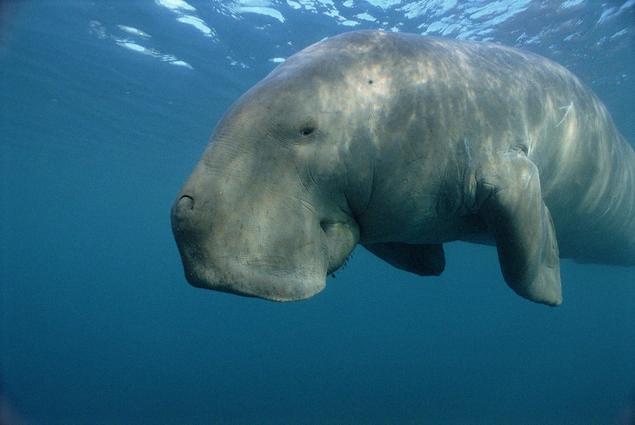
Estimated Number of Remaining Dugongs
According to estimates, the total number of dugongs in the Indo-Pacific region is approximately 30,000. However, the population size varies across different regions. In population 3, the number of dugongs is not specified. In population 4, there are approximately 1,000 dugongs, whereas in population 5, there are around 1,000 dugongs north of the equator and 500 dugongs south of the equator. It is worth mentioning that populations 4 and 5 appear to be in a critical situation, and the number of dugongs in these populations is a cause of concern. Therefore, it can be inferred that the total number of dugongs left in the world is relatively low, and conservation efforts are necessary to protect these animals from further decline.
Do Dugongs Still Exist?
Dugongs do still exist. They are a species of marine mammal that can be found in the coastal waters of the Indian and western Pacific Oceans, including the waters around Australia, Indonesia, and parts of Africa. While dugongs are now legally protected throughout their range, their populations are still in a tenuous state and face threats such as habitat loss, hunting, and accidental entanglement in fishing gear. Despite these challenges, dugongs continue to exist and efforts are underway to help ensure their survival.
Difference Between Manatee and Dugong
Manatees and dugongs are both aquatic mammals and belong to the same order of Sirenia. However, there are some differences between them in terms of their physical characteristics.
Tail: Manatees have a horizontal, paddle-shaped tail with only one lobe that moves up and down when the animal swims. On the other hand, dugongs have a fluked tail, which means it is made up of two separate lobes joined together in the middle.
Snout: The snout of a dugong is broad, short, and trunk-like, while manatees have a more rounded snout.
Teeth: Dugongs have a more pronounced and distinct set of teeth, while manatees have a less distinct set of teeth.
Habitat: Manatees are found in both freshwater and saltwater habitats, while dugongs are mainly found in saltwater habitats.
While manatees and dugongs share some similarities, such as their slow-moving, herbivorous nature, there are distinct differences in their physical characteristics and habitats.
Conclusion
Dugongs are fascinating marine mammals that are known for their herbivorous diet of seagrasses. These animals are commonly referred to as ‘sea cows’ due to their grazing habits and are found in shallow, warm waters of the Indo-Pacific region. While they are legally protected, their populations are still in a vulnerable state, especially in populations 4 and 5. Dugongs have a distinctive fluked tail and a broad, short, trunk-like snout that sets them apart from manatees. With only around 30,000 dugongs estimated to exist in the wild, it is important to continue to protect these unique creatures for future generations to enjoy.

